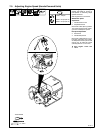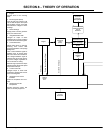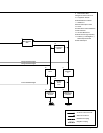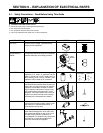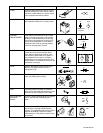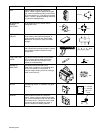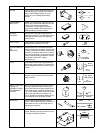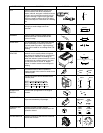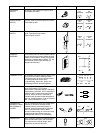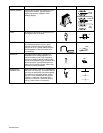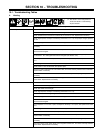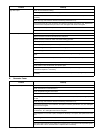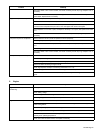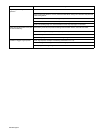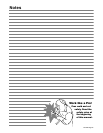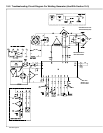
TM-499 Page 29
PART NAME CIRCUIT SYMBOLPICTUREFUNCTION
PRESSURE
SWITCH
A change in the pressure of a gas or liquid
will actuate this switch.
OPENS
ON
INCREASE
CLOSES
ON
INCREASE
S1 S1
TEMPERATURE
SWITCH
Typically used to protect engines, this switch
is actuated by heat.
OPENS
ON
INCREASE
S1
CLOSES
ON
INCREASE
S1
WATER FLOW
SWITCH
A switch that is actuated by the flow of a
liquid. Typically used to protect
“water-cooled” torches.
OPENS
ON
INCREASE
S1
CLOSES
ON
INCREASE
S1
TERMINAL
ASSEMBLY
A connection point for primary power and the
jumper links that are used to match the input
voltage to the machine. Usually, the terminal
assembly is marked with the letters “TE”, but
the electrical symbol looks identical to a
standard terminal strip.
TE1
TE1
TERMINAL STRIP An insulated connection point for wires. They
are used for the ease of making multiple
connections and can be a convenient point
for making electrical checks when
troubleshooting. (Notice the “jumper link”
connecting terminals A and B together.)
ABCDE
1T
42 42 104 105 74
104 105
THERMISTOR A thermally sensitive resistor. There are two
types of thermistor, PTC (Positive
Temperature Coefficient) and NTC (Negative
Temperature Coefficient). A PTC thermistor’s
resistance will increase as the temperature
goes up, where as an NTC thermistor’s
resistance will decrease as the temperature
goes up. Primarily used for “Fan on Demand”
and “Thermal Shutdown” circuits.
RT1
TH1
OR
THERMOSTAT,
NORMALLY OPEN
AND NORMALLY
CLOSED
This is a switch that closes its normally open
contacts (or opens its normally closed
contacts) when a preset temperature is
reached. When the temperature goes back
down, it will reset itself. Uses of these
devices include turning on a fan motor when
needed and shutting off the output of a
welding power source if it is overheating.
NRM OPEN
NRM CLOSED
TP1TP1
TRANSISTOR Most commonly used as an electronic switch.
There are two basic types, PNP and NPN.
This refers to their internal design, which
determines current flow direction.
Q1 Q1
B
C
E
B
C
E
NPN PNP



